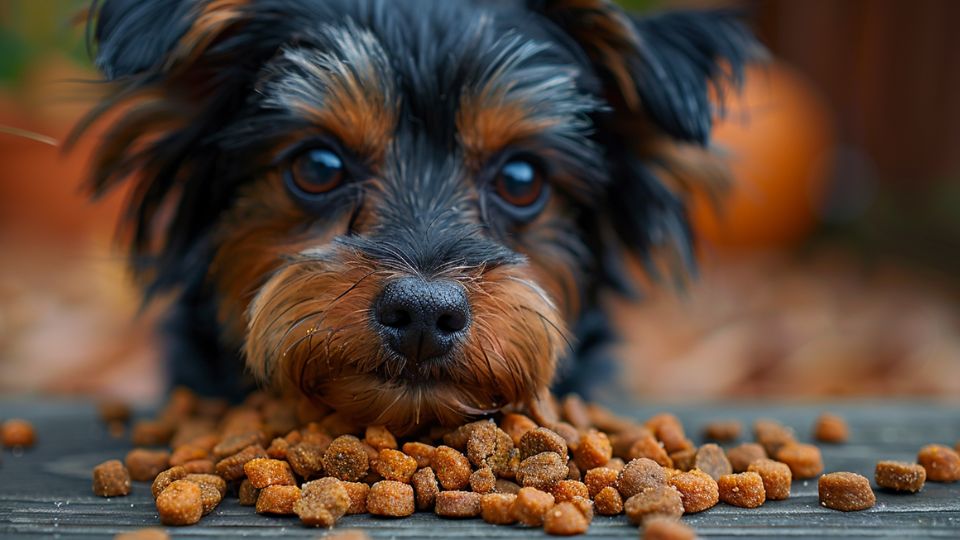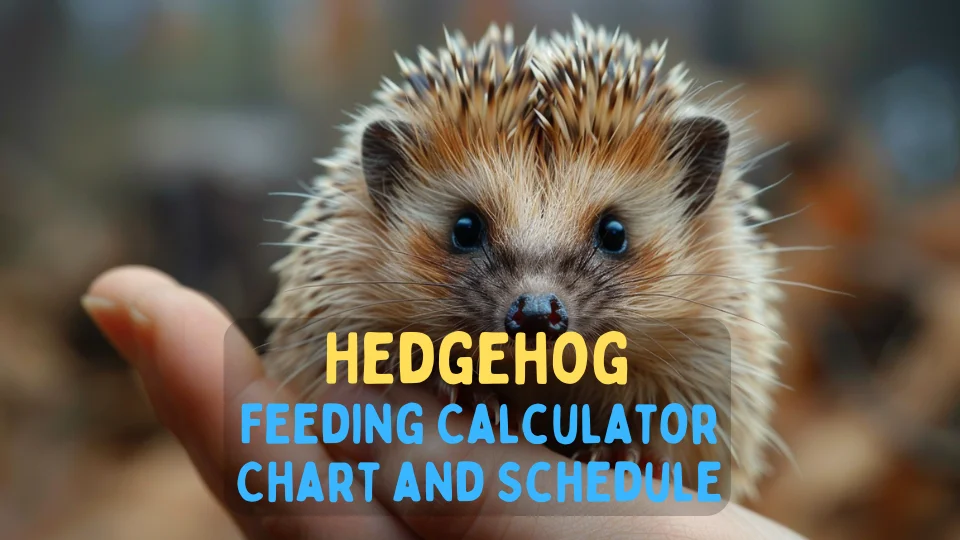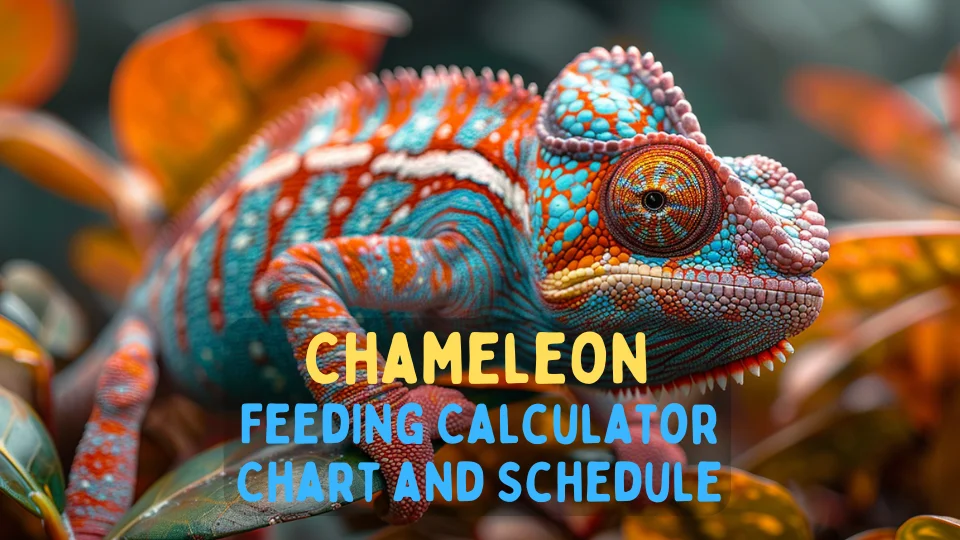So, you’ve got a dog who’s always hungry, right? Ever felt like you need a Ph.D. in canine nutrition just to figure out how much kibble your furry friend needs?
Well, fret no more! In this guide, we are going into the dog feeding calculator – your trusty sidekick in the quest for a well-fed dog.
Dog Feeding Calculator

Feeding Schedule and Chart For a Dog
Alright, let’s look into the nitty-gritty of your dog’s feeding routine:
By sticking to a consistent feeding schedule, you’re not only keeping your dog’s belly happy but also establishing a routine that they’ll come to rely on and love.
Dog Recipe Generator
The Dog Recipe Generator, a paw-some tool designed to cater to the culinary needs of our beloved canine companions!
Whether you’re a seasoned chef or a novice in the kitchen, this innovative platform offers a delightful array of nutritious and delicious recipes tailored specifically for dogs.
Click the button below to generate a random dog recipe!
Please note that the specific feeding times and quantities may vary depending on factors such as the dog’s age, size, breed, and any dietary requirements or restrictions.
| Time | Meal | Quantity |
|---|---|---|
| 7:00 AM | Breakfast | 1 cup dry kibble |
| 12:00 PM | Lunch | 1/2 cup wet food |
| 5:00 PM | Dinner | 1 cup dry kibble |
This schedule assumes feeding twice a day, but you can adjust the frequency and portion sizes according to your dog’s needs and preferences. It’s essential to provide fresh water at all times for your dog to stay hydrated.

Dog Meal Planning Tool
Our Dog Meal Planning Tool – the ultimate resource for ensuring your canine companion receives the nutrition they need to thrive!
Created with the expertise of veterinarians and pet nutritionists, this printable tool simplifies the process of crafting well-balanced meals tailored to your dog’s individual requirements.


Good Food To Feed Your Dog
Your dog’s diet should be a blend of deliciousness and nutrition. Here’s a closer look at the key components of a balanced canine cuisine:
When it comes to your dog’s diet, quality is everything. Treat them like the kings and queens they are, and they’ll thank you with wagging tails and slobbery kisses. After all, a well-fed dog is a happy dog!

What Not To Feed a Dog
When it comes to your furry friend’s diet, some foods are a strict no-go zone. Keep these items far away from your pup’s bowl to avoid any health hiccups:
When it comes to your dog’s diet, it’s better to be safe than sorry.

Dog Feeding Chart by Age Summary
| Dog Weight (kg) | Puppy Feeding (4-6%) Daily Recommendation (g) | Adult Dog Feeding (2-3%) Daily Recommendation (g) |
|---|---|---|
| 5 | 200 – 300 | 100 – 150 |
| 10 | 400 – 600 | 200 – 300 |
| 15 | 600 – 900 | 300 – 450 |
| 20 | 800 – 1200 | 400 – 600 |
| 25 | 1000 – 1500 | 500 – 750 |
| 30 | 1200 – 1800 | 600 – 900 |
| 35 | 1400 – 2100 | 700 – 1050 |
| 40 | 1600 – 2400 | 800 – 1200 |
How Many Calories Does My Dog Need
Your dog’s caloric needs are crucial for maintaining their health and happiness.
Let’s break it down so you can ensure your pup gets just the right amount of fuel for their adventures:
- Body Weight: First things first, you need to know your dog’s weight. Whether they’re a petite pug or a majestic mastiff, their weight serves as the foundation for calculating their caloric needs. If you’re not sure, a quick weigh-in at home or a trip to the vet can give you the numbers you need.
- Resting Energy Requirement (RER): Think of this as the baseline number of calories your dog needs to maintain their current weight while chilling on the couch or snoozing in the sun.You can calculate it using a simple formula:RER = 30 × (weight in kilograms) + 70Let’s say your dog weighs 10 kilograms. Plug that into the formula, and you get: 30 × 10 + 70 = 370 calories per day.
- Activity Level: Now, here’s where it gets interesting. Just like us, dogs’ calorie needs can vary based on their activity level. A couch potato might need fewer calories than a four-legged sprinter who loves chasing tennis balls.
- For moderately active dogs, you’ll want to multiply the RER by 1.6.
- For those pups who never seem to run out of energy, multiply the RER by 2.
Let’s crunch some numbers for our 10-kilogram pooch:
- Moderately active: 370 × 1.6 = 592 calories per day
- Highly active: 370 × 2 = 740 calories per day
Remember, these numbers are just a starting point. Keep an eye on your dog’s weight and adjust their calorie intake as needed. A healthy balance of nutrition and exercise will keep your pup bounding through life with a wagging tail and a slobbery smile!
Puppy Feeding Calories Summary
| Dog Weight (kg) | Puppy Feeding (4-6%) Daily Recommendation (g) | Calories – Puppy up to 4 months | Calories – Puppy over 4 months |
|---|---|---|---|
| 5 | 200 – 300 | 390 | 260 |
| 10 | 400 – 600 | 654 | 436 |
| 15 | 600 – 900 | 885 | 590 |
| 20 | 800 – 1200 | 1098 | 732 |
| 25 | 1000 – 1500 | 1299 | 866 |
| 30 | 1200 – 1800 | 1491 | 994 |
| 35 | 1400 – 2100 | 1674 | 1116 |
| 40 | 1600 – 2400 | 1848 | 1232 |
Adult Dog Feeding Calories Summary
| Dog Weight (kg) | Adult Dog Feeding (2-3%) Daily Recommendation (g) | Calories – Neutered Adult | Calories – Intact Adult | Calories – Obese Prone | Calories – Weight Loss |
|---|---|---|---|---|---|
| 5 | 100 – 150 | 208 | 234 | 182 | 130 |
| 10 | 200 – 300 | 349 | 392 | 305 | 218 |
| 15 | 300 – 450 | 472 | 531 | 413 | 295 |
| 20 | 400 – 600 | 586 | 659 | 512 | 366 |
| 25 | 500 – 750 | 693 | 779 | 606 | 433 |
| 30 | 600 – 900 | 795 | 895 | 696 | 497 |
| 35 | 700 – 1050 | 893 | 1004 | 781 | 558 |
| 40 | 800 – 1200 | 986 | 1109 | 862 | 616 |
These calorie recommendations are based on the provided data, including different categories such as puppy feeding up to 4 months, puppy feeding over 4 months, neutered adult, intact adult, obese prone, and weight loss.












Leave a Reply